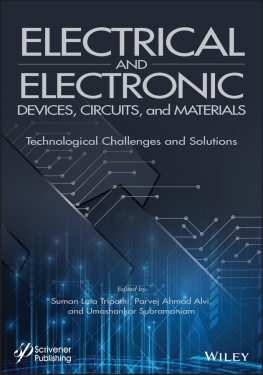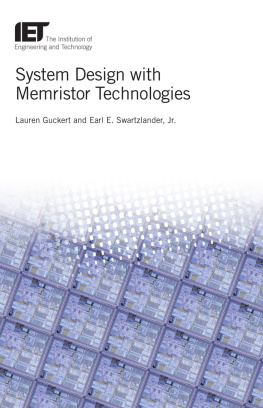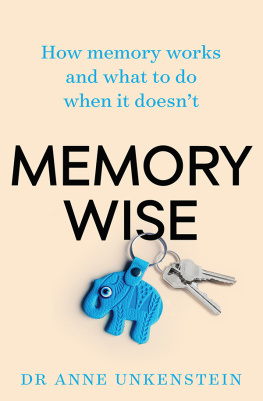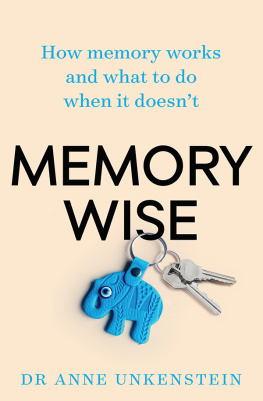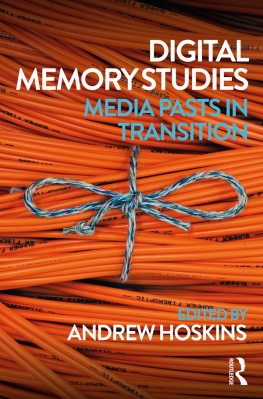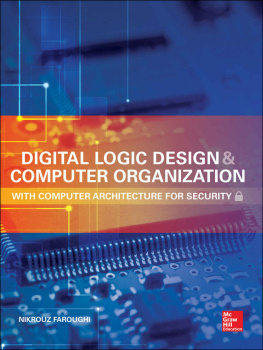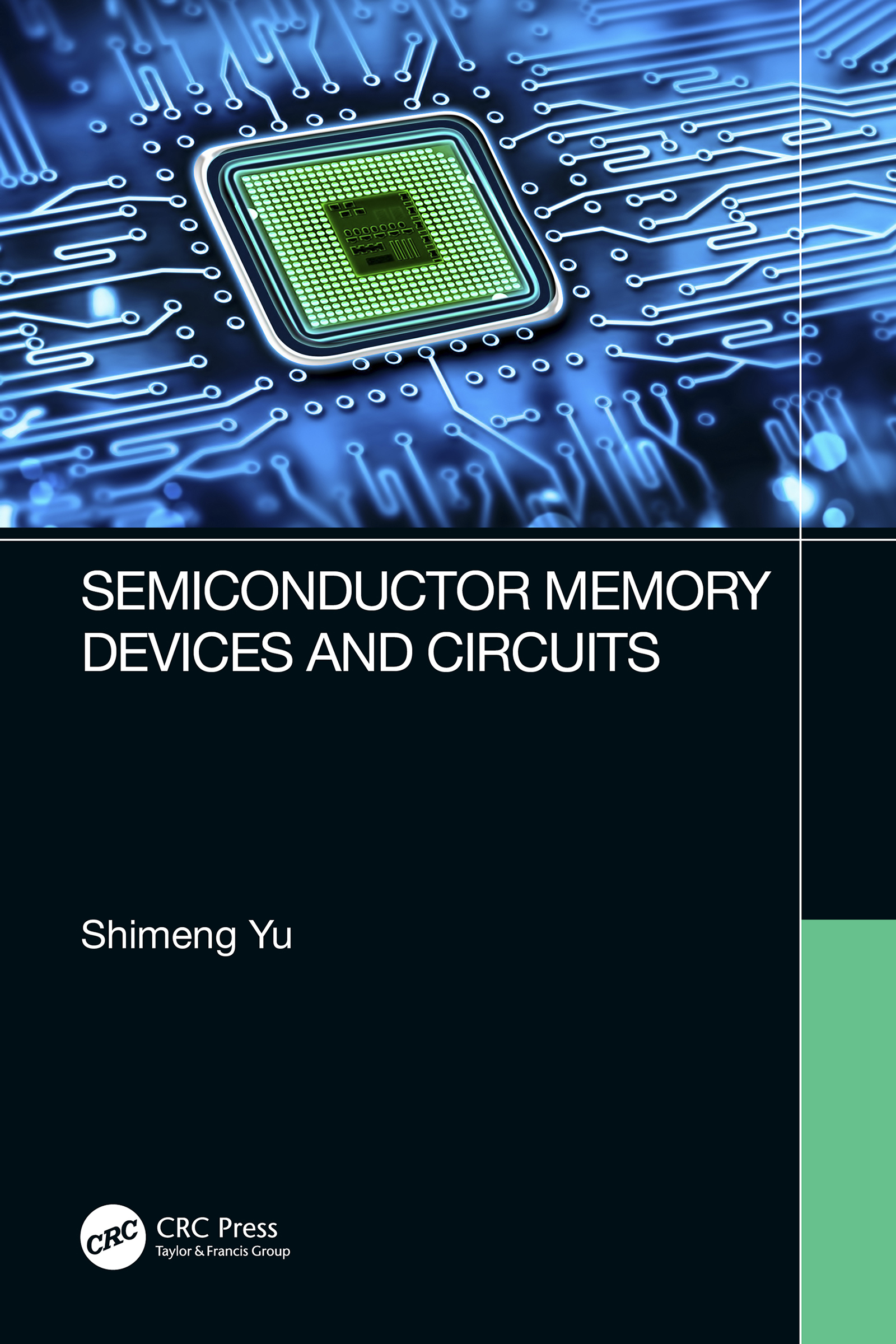
Semiconductor Memory Devices and Circuits
Semiconductor Memory Devices and Circuits
Shimeng Yu

First edition published 2022
by CRC Press
6000 Broken Sound Parkway NW, Suite 300, Boca Raton, FL 33487-2742
and by CRC Press
4 Park Square, Milton Park, Abingdon, Oxon, OX14 4RN
CRC Press is an imprint of Taylor & Francis Group, LLC
2022 Shimeng Yu
Reasonable efforts have been made to publish reliable data and information, but the author and publisher cannot assume responsibility for the validity of all materials or the consequences of their use. The authors and publishers have attempted to trace the copyright holders of all material reproduced in this publication and apologize to copyright holders if permission to publish in this form has not been obtained. If any copyright material has not been acknowledged please write and let us know so we may rectify in any future reprint.
Except as permitted under U.S. Copyright Law, no part of this book may be reprinted, reproduced, transmitted, or utilized in any form by any electronic, mechanical, or other means, now known or hereafter invented, including photocopying, microfilming, and recording, or in any information storage or retrieval system, without written permission from the publishers.
For permission to photocopy or use material electronically from this work, access
Trademark notice: Product or corporate names may be trademarks or registered trademarks and are used only for identification and explanation without intent to infringe.
Library of Congress CataloginginPublication Data
Names: Yu, Shimeng (Electrical engineer), author.
Title: Semiconductor memory devices and circuits / Shimeng Yu.
Description: First edition. | Boca Raton : CRC Press, 2022. | Includes bibliographical references and index. | Summary: "This book covers semiconductor memory technologies from device bit-cell structures to memory array design with an emphasis on recent industry trends and cutting-edge technologies"-- Provided by publisher.
Identifiers: LCCN 2021053445 (print) | LCCN 2021053446 (ebook) | ISBN 9780367687076 (hardback) | ISBN 9780367687151 (paperback) | ISBN 9781003138747 (ebook)
Subjects: LCSH: Semiconductor storage devices. | Random access memory.
Classification: LCC TK7895.M4 Y85 2022 (print) | LCC TK7895.M4 (ebook) | DDC 004.5--dc23/eng/20211228
LC record available at https://lccn.loc.gov/2021053445
LC ebook record available at https://lccn.loc.gov/2021053446
ISBN: 978-0-367-68707-6 (hbk)
ISBN: 978-0-367-68715-1 (pbk)
ISBN: 978-1-003-13874-7 (ebk)
DOI: 10.1201/9781003138747
Typeset in Times
by SPi Technologies India Pvt Ltd (Straive)
For my wife, Xin Shu, who is fully supportive of my career (including this book write-up) with greatest love.
Preface
The emerging applications enabled by artificial intelligence (AI) are becoming indispensable in our daily life. AI software models demand efficient hardware technologies to store and process an enormous amount of data. This book aims to cover the fundamentals of semiconductor memory devices and peripheral circuits and the recent industry trends in scaling the memory cells toward the sub-10 nm scale and vertical integration via three-dimensional (3D) stacking.
The functionality and performance of todays computer architectures are increasingly dependent on the characteristics of the components in the memory hierarchy. The memory hierarchy includes on-chip cache and off-chip standalone memories such as main memory, storage-class-memory, and solid-state drive. This book will introduce the semiconductor memory technologies that serve various levels of the memory hierarchy, from the device cell structures to the array-level design, with an emphasis on the recent industry trend and cutting-edge technologies. Since this is a rapidly evolving field, many discussions in this book are based on the state-of-the-art as of 2020, with reasonable projections toward the next decade.
will present an overview of the semiconductor memory technologies, including the concept of the memory hierarchy, the generic memory array diagram and common peripheral circuit modules, metrics for evaluating the bit density, and array area efficiency.
will present the mainstream semiconductor memory technologies, static random access memory (SRAM), dynamic random access memory (DRAM), and Flash memory, respectively. Topics such as basic operation principles, device physics, manufacturing processes, bit-cell design considerations, array architectures, and technology scaling challenges will be discussed. Recent industry trends such as FinFET-based SRAM, high-bandwidth memory (HBM), and 3D vertical NAND Flash will be introduced.
also introduces the concept of the compute-in-memory that merges the mixed-signal computation into the memory arrays for accelerating the vector-matrix multiplication in the deep neural networks, which is an attractive paradigm for machine learning hardware accelerator.
The materials covered in this book are based on the graduate-level course that the author has been offering eight times in the past decade at the Arizona State University and the Georgia Institute of Technology. More than 500 students have taken this course and many of them are now working in the semiconductor industry. The author has also released his recent recorded lectures on YouTube publicly, which has attracted more than 20,000 views. This book will serve as a textbook for graduate-level curriculum in electrical and computer engineering programs, and/or a reference for entry-level industry engineers and researchers.
Acknowledgments
The author would like to thank his students, Anni Lu, Hongwu Jiang, Dong Suk Kang, Yuan-chun Luo, Yandong Luo, and his postdoc researcher Dr. Wonbo Shim for their help in graphics editing and text proofreading.
Author
Shimeng Yu Shimeng Yu is currently an associate professor of electrical and computer engineering at the Georgia Institute of Technology. He received a B.S. degree in microelectronics from Peking University in 2009, and M.S. degree and Ph.D. degree in electrical engineering from Stanford University in 2011 and 2013, respectively. From 2013 to 2018, he was an assistant professor at the Arizona State University.
Prof. Yus research interests include semiconductor devices and integrated circuits for energy-efficient computing systems. His research expertise is on emerging non-volatile memories for applications such as deep learning accelerator, in-memory computing, 3D integration, and hardware security. He has published more than 350 peer-reviewed conference and journal papers and with more than 18,000 Google Scholar citations with an H-index 64.
Among Prof. Yus honors include being a recipient of NSF Faculty Early CAREER Award in 2016, IEEE Electron Devices Society (EDS) Early Career Award in 2017, ACM Special Interests Group on Design Automation (SIGDA) Outstanding New Faculty Award in 2018, Semiconductor Research Corporation (SRC) Young Faculty Award in 2019, ACM/IEEE Design Automation Conference (DAC) Under-40 Innovators Award in 2020, IEEE Circuits and Systems Society (CASS) Distinguished Lecturer for 20212022, IEEE Electron Devices Society (EDS) Distinguished Lecturer for 20222023.
Prof. Yu has been serving many premier conferences as part of the technical program committees, including IEEE International Electron Devices Meeting (IEDM), IEEE Symposium on VLSI Technology and Circuits, IEEE International Reliability Physics Symposium (IRPS), ACM/IEEE Design Automation Conference (DAC), ACM/IEEE Design, Automation & Test in Europe (DATE), ACM/IEEE International Conference on Computer-Aided Design (ICCAD), etc. He is an editor of the
Next page

